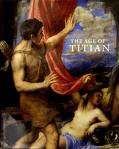The artist and biographer Giorgio Vasari visited Tiziano Vecellio, alias Titian, in his studio in Venice in 1562. Deeply moved but also, it seems, slightly disconcerted by the wildness of the painter’s style in his later years, Vasari concluded that he had invented a new form of art, “made up of bold strokes and blobs … beautiful and astonishing, because it makes paintings seem alive.” Titian spent a lifetime creating pictures that seem alive, and in the process transformed more or less every type of painting known in his time: the portrait, the nude, the landscape, the altarpiece, the mythological scene. During the course of four centuries many of his works have been lost or destroyed, while those that do survive are dispersed widely across the globe. The museums which own them regard them as precious treasures and lend them to other institutions only with great reluctance. Despite that, the National Gallery has managed to beg and borrow an extraordinary number of outstanding pictures by the Venetian master for its forthcoming exhibition of his work (19 February to 18 May), which will surely be the show of the year. Drawing together more than forty of his finest paintings, this is an ambitious attempt to show the full range of Titian’s work and thus demonstrate something, at least, of his infinite variety.
Born into minor aristocracy in Pieve di Cadore, in the lush and hilly mainland territories of the Veneto, Titian was sent to Venice at the age of nine and apprenticed to the city’s greatest fifteenth-century painter, Giovanni Bellini. He became one of the first celebrity artists as well as the greatest Venetian painter of his day, with a genius for self-promotion to match his artistic talents. By the end of his long life he was working almost...

